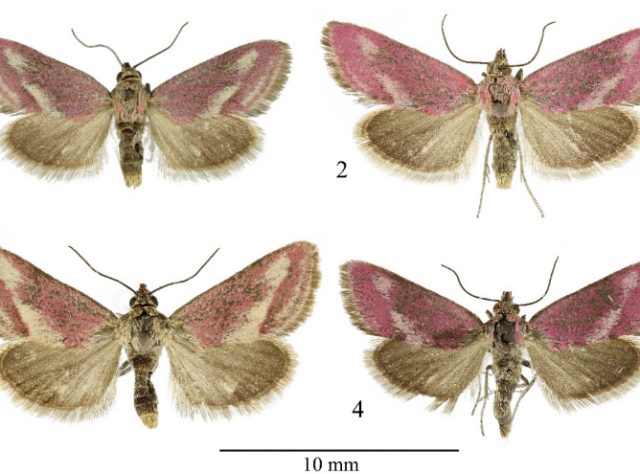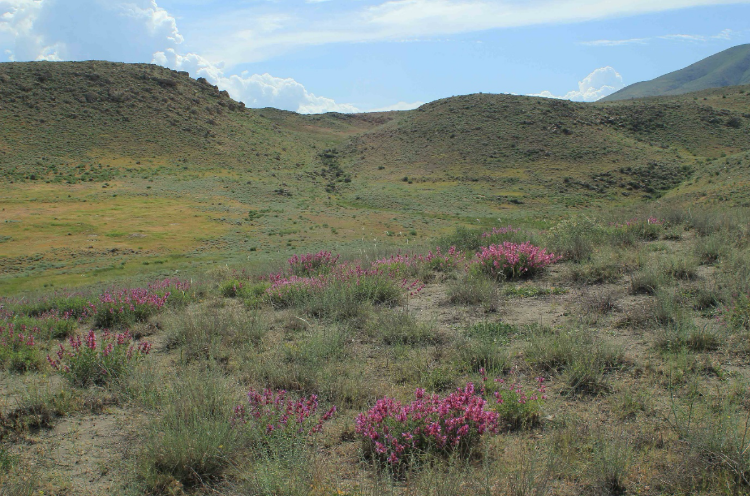
This brand-new-to-science moth species stands out from its fellows with pinkish purple forewings to ward off predators. Credit: Nota Lepidopterologica
Tegostoma burtoni, a new moth species belonging to the Crambidae family, has just been described and named in honour of WLT founder John Burton. Identified in 2022, it was studied rigorously from its physical characteristics down to its DNA and found to be an as-yet unknown to science species.
This newly found species is a desert specialist, endemic to Armenia and the unique vegetation that grows in the sandy soils of the Goravan Sands Sanctuary in Armenia’s Ararat Province. T. burtoni may be small, with a wingspan of barely more than a centimetre, but stands out with its striking purple-hued forewings. Other members of the Crambidae family have wings made up of muted, earthy tones to blend into their sandy surroundings. However, this moth’s vibrant colour tricks potential predators into believing it is much larger than it truly is, warning them off.

The Tegostoma burtoni moth is only found in a tiny section of the grassy landscape of the Goravan Sands Sanctuary in Armenia’s Ararat Province. Credit: Nota Lepidopterologica
The moth’s habitat lies just 10 miles from the Caucasus Wildlife Refuge, managed by WLT-partner Foundation for the Preservation of Wildlife & Cultural Assets (FPWC). Despite only being recently described, T. burtoni’s habitat is under threat from human activity, making conservation efforts vital to protect this rare moth and its ecosystem. For this very reason, T. burtoni was named after John Burton in recognition of his contributions to conservation, in Armenia and across the world.
Such contributions can hardly be measured over the course of a life’s work in conservation, as the impacts ripple outwards and continue long after the work is undertaken. But naming species that might not otherwise be known to us without the efforts of dedicated conservationists and scientists is a fitting reminder that conservation not only protects what is already here but paves the way for countless new possibilities.
You can support habitats such as that of this miniscule but beautiful moth through Plant a Tree

